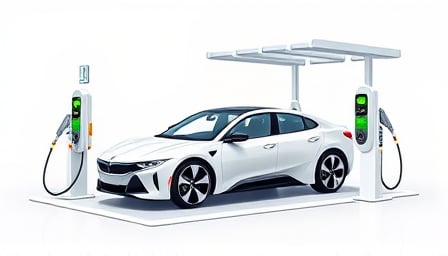Renault’s Share Performance and Market Position
Renault SA, the French multinational automotive manufacturer, has witnessed a notable contraction in its equity value over the preceding twelve months. A hypothetical investor who had acquired Renault shares at the beginning of 2023 would have incurred an approximate 11 % capital loss by the close of 2024, despite the company’s market capitalization recently stabilising around €10 billion. The current share price remains below its 52‑week high, signalling a sustained downward pressure on investor sentiment.
This trajectory reflects broader dynamics in the passenger‑vehicle sector, where escalating input costs, tightening regulatory frameworks on emissions, and a shift in consumer preference toward electrified platforms have eroded profitability margins for legacy automakers. Renault’s strategic pivot toward electrification, epitomised by models such as the Scénic E‑Tech Electric, has yet to fully offset the decline in conventional vehicle sales. Nonetheless, the company’s established dealer network and joint‑venture arrangements with emerging markets provide a resilient foundation for medium‑term recovery.
Mitsubishi’s Entry into the Electric SUV Segment
In the same quarter, Mitsubishi Motors announced the forthcoming launch of its first fully electric sport‑utility vehicle, the Eclipse Cross. The vehicle promises an estimated range of up to 600 km on a single charge and is slated for market availability by year‑end 2024. The Eclipse Cross directly competes with Renault’s Scénic E‑Tech Electric and other compact electric SUVs that have captured significant market share in Europe and Asia.
Mitsubishi’s initiative underscores a sector‑wide acceleration toward electrification, driven by stringent CO₂ emission targets across the European Union and the United States. By aligning its product portfolio with these regulatory imperatives, Mitsubishi positions itself to capture a growing segment of consumers who demand both environmental responsibility and high-performance capabilities.
Nissan’s “Re:Nissan” Design Consolidation
Nissan Motor Co., Ltd. has unveiled a comprehensive reorganisation of its global design function under the umbrella of its “Re:Nissan” strategy. The plan will see the closure of design studios in the United States and Brazil, alongside a reduction of design activities in the United Kingdom and Japan. The company aims to centralise design operations into five principal hubs, thereby streamlining decision‑making, reducing overhead costs, and fostering tighter integration between engineering and design disciplines.
This restructuring reflects a broader trend among multinational automotive firms to optimise their organisational structures in response to market volatility, supply‑chain disruptions, and the increasing complexity of vehicle development cycles. By consolidating design talent, Nissan hopes to accelerate the delivery of new models that meet evolving safety, sustainability, and digital‑experience standards.
Futech Technology’s Expansion of High‑Pressure Power Systems
Futech Technology Co., Ltd., a specialist in new‑energy automotive high‑pressure power systems, has announced an orderly expansion of its production capacity. The company’s principal manufacturing base in Anji is slated for incremental upgrades to accommodate higher output volumes. Concurrently, Futech’s internationalisation drive has yielded a noteworthy outcome: overseas business revenue accounted for more than 17 % of its total revenue in the first half of 2024.
The growth of Futech’s high‑pressure power systems portfolio aligns with the accelerating adoption of battery electric vehicles (BEVs) and hydrogen fuel‑cell technologies, which demand advanced power‑train components for efficiency and safety. By scaling production in China’s automotive‑heavy industrial hub and strengthening its overseas presence, Futech is well positioned to serve both domestic and international OEMs looking to diversify their power‑train solutions.
Cross‑Sector Implications
The concurrent developments in Renault, Mitsubishi, Nissan, and Futech illustrate the multifaceted transformation underway across the automotive ecosystem. While legacy manufacturers grapple with profitability and strategic realignment, suppliers are scaling specialised technologies to meet the electrification wave. The convergence of design optimisation, electrified product launches, and supply‑chain integration points to a future where operational efficiency and technological innovation are inseparable drivers of competitive advantage.
